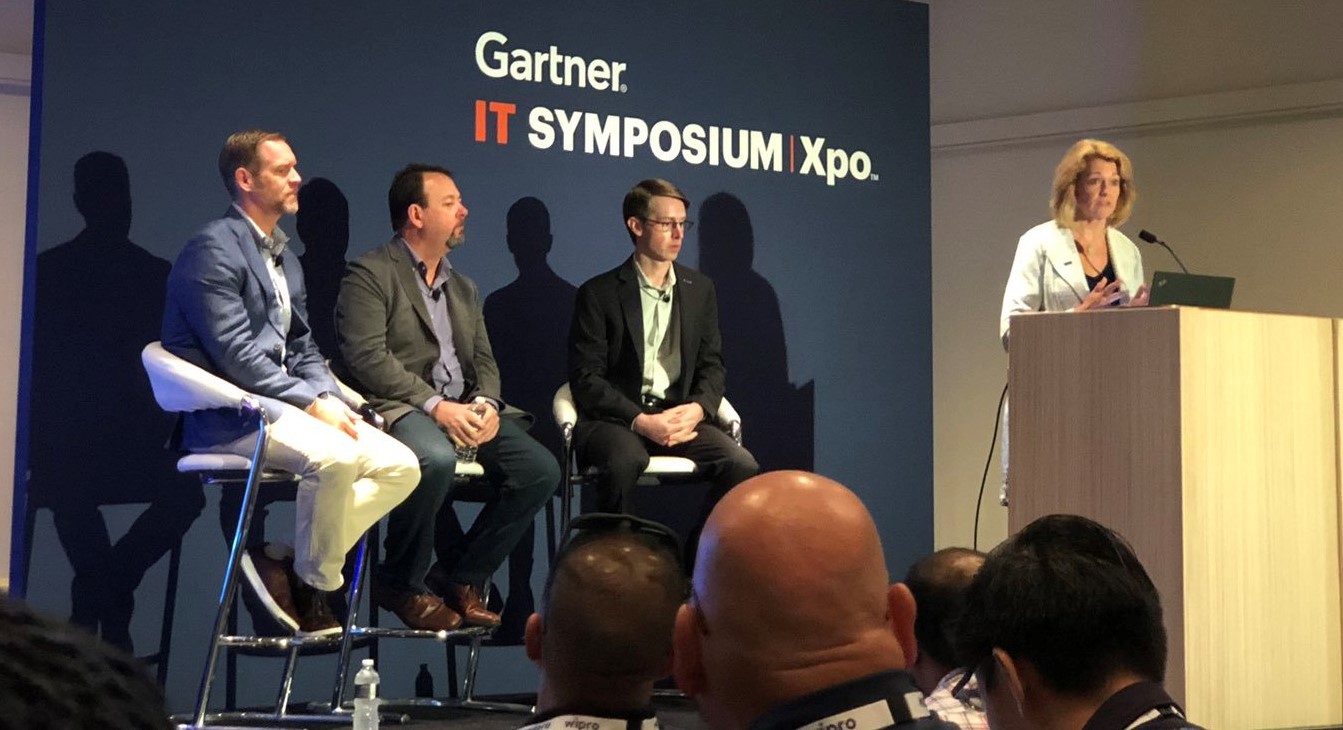Key Takeaways from IT Leaders Panel on Data Center Strategies
Hybrid IT, Colocation, Connectivity in Data Centers
Attending Gartner IT Symposium/Xpo this week, I’ve had a strikingly similar conversation with practically every IT executive I’ve met. They describe their organizations’ “cloud-first” mandates but lament their soaring monthly cloud provider bills and egregious data transfer costs. They acknowledge that public cloud’s economics and multi-tenancy environments aren’t a fit for every workload. As a result, they’re still maintaining on-premise data centers to support these applications.

During the conference, I had the privilege of moderating an informative IT Leaders panel discussion on precisely this topic. Brandon Pulsipher, VP, Cloud Engineering and Operations at Adobe, Dwane Ballard, Partner and CTO at Pegasus Technology Solutions and my colleague Russell Cozart, head of CXD Product Management at Cyxtera shared how organizations are evolving their data center strategies to meet cloud-first mandates for applications not fit for public cloud.
Here are some key takeaways from our discussion:
Cloud-first realities
Brandon shared how Adobe’s IT organization takes a “why not public cloud?” approach when determining where to deploy new applications. They do a cost analysis and consider the impact on customer experience, governance and data security concerns such as privacy laws in China and India to ensure they choose the right platform for the right job. As a result, Adobe relies on a mix of on-premise and colocation data centers as well as a multi-cloud strategy to deliver the IT infrastructure upon which its Experience Cloud is based. For example, they leverage public cloud instances to be closer to end users, particularly in remote parts of the world. Larger, steady-state applications with a large amount of data at rest are better suited for their colocation data centers, with the ability to burst to cloud for additional storage when needed. Russell shared an experience he’d had in a past IT role in which his company had moved a significant number of applications into the public cloud as part of a cloud-first mandate. However, most of these applications were moved back on-premises once they realized the high six-figure monthly bill these applications generated.
Making colocation more cloud-like
As a managed services provider for medium to large enterprises, Dwane shared how many of Pegasus Technology Solutions’ customers would like a cloud-first strategy. They engage Pegasus to help them determine which apps aren’t a fit due to security or design constraints that a multi-tenant environment can’t address. In cases where public cloud is not a fit, Pegasus uses Cyxtera CXD to deploy dedicated infrastructure in colocation on-demand that they configure, operate and manage on behalf of their clients. Pegasus IT specialists access CXD via API or its web console for easy, automated configuration and deployment of new HCI compute nodes (CXD also support HPE ProLiant bare metal servers) instead of the weeks and months it typically takes to provision infrastructure in colocation. Pegasus has complete control of the environment, from the OS or hypervisor, all the way up through the application stack. They’re able to offer their customers colocation services in a more cloud-like way - on a subscription basis - and expand as their requirements grow.
Interconnection and cloud connectivity for hybrid IT
During our discussion, we also looked at the role interconnection and cloud connectivity plays and how it’s changed. All agreed that it’s a challenge and an increasingly important aspect of their hybrid IT strategies. As the demand from their customers for hybrid connectivity increases, Dwane from Pegasus shared how they will need to add cloud on-ramps and express routes going forward. Brandon commented how public cloud providers make it easy to move data into the cloud – but It needs to be easier for data to be moved in and out and to other cloud providers. As a result, Adobe is looking more to colocation providers to serve as connectivity hubs in some markets. Russell cited how Cyxtera CXD customers use the platform to provision on-demand, virtual cross connects and internet connectivity. The platform also enables point and click access to an ecosystem of network services, cloud on-ramps and other service providers such as Storage as a Service for disaster recovery.
For more insights on how colocation and cloud connectivity can fortify hybrid IT, read Craig Matsumoto, Senior Analyst at 451 Research’s report on interconnection and the enterprise. You can also attend our live Q&A webinar on Oct 29th 1PM ET in which I’ll be discussing with Craig his recommended interconnection priorities for hybrid IT.
Evolving role of data center providers
In closing, Dwane and Brandon shared share what they’ll look for in a data center services provider to help them address their needs in the coming year. As Pegasus’ customer base continues to expand globally, Dwane said they’re able to rely on Cyxtera as their preferred data center provider. He said that Cyxtera offers the global footprint they need. Cyxtera’s flexibility and willingness to partner with the Pegasus team to support customers and seamless connectivity are key elements for Dwane.
Brandon stressed that when evaluating a data center services provider, he expects them to be able to deliver a consistent portfolio and service experience globally. He also looks for a provider that can enable Adobe to be close to the end user so they can navigate data flow and address data sovereignty and privacy concerns. Brandon closed by reiterating the importance of connectivity in selecting a provider – He looks for providers that can go beyond data center to data center connectivity to enable a multi-cloud transport layer.
Views and opinions expressed in our blog posts are those of the employees who made them and do not necessarily reflect the views of the Company. A reader should not unduly rely on any statements made therein.

Share this Post